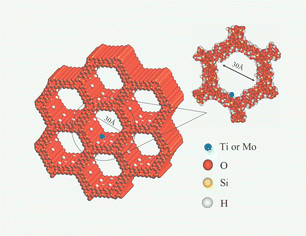Determining the structure of active sites, transition states and intermediates in heterogeneously catalysed reactions
Abstract
With open-structure (nanoporous) oxidic solids, numerous distinct kinds of single-site catalysts may be precisely designed. Apart from serving as a means of generating a range of powerful new catalysts (especially for selective oxidations), in which well-defined active sites are carefully engineered, the detailed local atomic environment of these sites may be determined by in situ X-ray absorption fine-structure (XAFS) spectroscopy. Moreover, by combining steady-state XAFS studies with density functional (DF) computations the structure of intermediate and transition states along the pathway of heterogeneously catalysed reactions may also be determined.


 Please wait while we load your content...
Please wait while we load your content...